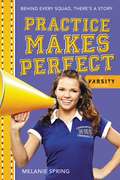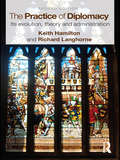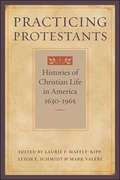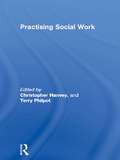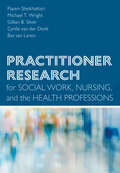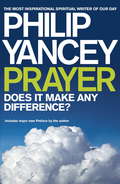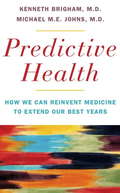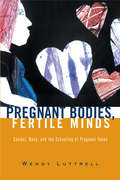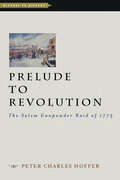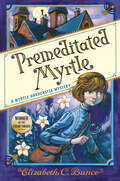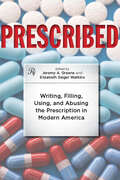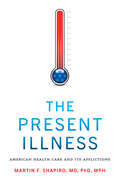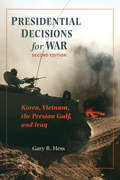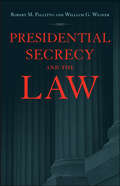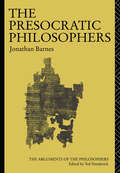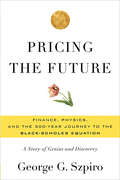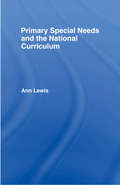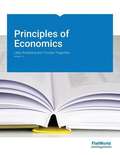- Table View
- List View
Practice Makes Perfect (A Varsity Novel #3)
by Melanie SpringBehind every squad, there's a story.It's spring semester at Northside High and the girls of the JV cheer squad are trying out for next fall. The pressure is on as Chloe, Devin, Kate, and Emily practice Varsity-level stunts amidst the drama of best friends, boyfriends, and frenemies. When jealousy and competition threaten to tear these besties apart, can the girls band together to dominate at tryouts?Book 3 in the Varsity series has more best-friend drama, boy trouble, and, of course, sideline spirit!
The Practice of Diplomacy: Its Evolution, Theory and Administration
by Keith Hamilton Professor Richard LanghornePractice of Diplomacy has become established as a classic text in the study of diplomacy. This much-needed second edition is completely reworked and updated throughout and builds on the strengths of the original text with a strong empirical and historical focus. Topics new and updated for this edition include: discussion of Ancient and non-European diplomacy including a more thorough treatment of pre-Hellenic and Muslim diplomacy and the diplomatic methods prevalent in the inter-state system of the Indian sub-continent evaluation of human rights diplomacy from the nineteenth-century campaign against the slave trade onwards a fully updated and revised account of the inter-war years and the diplomacy of the Cold War, drawing on the latest scholarship in the field an entirely new chapter discussing core issues such as climate change; NGOs and coalitions of NGOs; trans-national corporations; foreign ministries and IGOs; the revolution in electronic communications; public diplomacy; transformational diplomacy and faith-based diplomacy. This text has established itself as a core text in the field of diplomacy and this new edition is absolutely essential reading for students and practitioners of diplomacy.
Practicing Protestants: Histories of Christian Life in America, 1630–1965 (Lived Religions)
by Laurie F. Maffly - Kipp Leigh E. Schmidt Mark ValeriThis collection of essays explores the significance of practice in understanding American Protestant life. The authors are historians of American religion, practical theologians, and pastors and were the twelve principal researchers in a three-year collaborative project sponsored by the Lilly Endowment. Profiling practices that range from Puritan devotional writing to twentieth-century prayer, from missionary tactics to African American ritual performance, these essays provide a unique historical perspective on how Protestants have lived their faith within and outside of the church and how practice has formed their identities and beliefs. Each chapter focuses on a different practice within a particular social and cultural context. The essays explore transformations in American religious culture from Puritan to Evangelical and Enlightenment sensibilities in New England, issues of mission, nationalism, and American empire in the nineteenth and twentieth centuries, devotional practices in the flux of modern intellectual predicaments, and the claims of late-twentieth-century liberal Protestant pluralism. Breaking new ground in ritual studies and cultural history, Practicing Protestants offers a distinctive history of American Protestant practice.
Practising Social Work
by Christopher Hanvey Terry PhilpotPracticing Social Workprovides a systematic exploratiuon of ar ange of social work approaches. Each chapter focuses on a single theme and explains the practice implications of a particular method.
Practitioner Research for Social Work, Nursing, and the Health Professions
by Michael T. Wright Payam Sheikhattari Gillian B. Silver Cyrilla van der Donk Bas van LanenAn invaluable tool for health and social work students and professionals who want to improve their practice through collaborative research with patients, clients, and colleagues.Throughout history, some of the most prominent contributors to health and social sciences have been men and women comfortable with both practice and academia. But today, research in health-related fields is increasingly conducted in specialized settings by people who are first and foremost researchers. Critics bemoan this loss of practice-based research, long considered a vital part of the contribution that doctors, nurses, public health workers, and social workers can make both to their field and the communities in which they work. Unfortunately, the explosion of new discoveries in health-related fields, along with the exponential increase in the amount of knowledge being produced and the growing demands of practice, have caused both the production and application of knowledge to become highly specialized and increasingly complex. This has resulted in a widening gap between research and practice.Recognizing the need for a guide to this type of research, Practitioner Research for Social Work, Nursing, and the Health Professions is a thoroughly reimagined version of a book originally published in 2011 in the Netherlands. Aimed at American practitioners, it is a highly practical guide for anyone in social work, nursing, and other health care and social welfare settings. Its seven-step Practitioner Research Method offers readers a tried-and-true approach to conducting research in their own work environments, and the authors use real-world examples to highlight strategies for overcoming barriers and incorporating research.While leading practitioners through each stage of the research process, the authors explain in detail how to apply a variety of field-tested tools and techniques. A unique and indispensable resource for students in undergraduate and graduate research courses, as well as for seasoned professionals who seek a practical guide for developing and implementing their own research projects in social work, nursing, and the health professions, this book is also the first textbook to introduce the concept and practice of practitioner research to an American audience.
Pragmatism, Postmodernism and the Future of Philosophy
by John J. StuhrFirst published in 2003. Routledge is an imprint of Taylor & Francis, an informa company.
Prayer: Does It Make Any Difference?
by Philip YanceyMulti-award winning spirituality writer Philip Yancey is loved throughout the world for his honest, insightful and inspirational writing. PRAYER: DOES IT MAKE ANY DIFFERENCE? carries all the hallmarks of classic Yancey, a journalist by training. His quest to unravel the mysteries of prayer reads as the journal of a fellow traveller: questioning, challenging, lamenting the unexplainable and rejoicing in the discovery of awesome insights. His journey is beautifully illustrated with moving true stories drawn from around the world.PRAYER: DOES IT MAKE ANY DIFFERENCE? tackles the following questions: What is prayer? What difference does it make? Why and how should we pray? What about unanswered prayer? How should we understand prayer for physical healing?Focusing on such a universal theme, this is potentially Yancey's biggest book yet. To date, his books have sold over 14 million copies, and have been translated into 25 languages. His first book with Hodder, SOUL SURVIVOR, sold over 90,000 copies in just five years.
Predictive Health: How We Can Reinvent Medicine to Extend Our Best Years
by Kenneth L. Brigham Michael M. JohnsOur health care system is crippled by desperate efforts to prevent the inevitable. A third of the national Medicare budget—nearly 175 billion—is spent on the final year of life, and a third of that amount on the final month, often on expensive (and futile) treatments. Such efforts betray a fundamental flaw in how we think about healthcare: we squander resources on hopeless situations, instead of using them to actually improve health.In Predictive Health, distinguished doctors Kenneth Brigham and Michael M.E. Johns propose a solution: invest earlier—and use science and technology to make healthcare more available and affordable. Every child would begin life with a post-natal genetic screen, when potential risk—say for type II diabetes or heart disease—would be found. More data on biology, behavior, and environment would be captured throughout her life. Using this information, health-care workers and the people they care for could forge personal strategies for healthier living long before a small glitch blows up into major disease. This real health care wouldn&’t just replace much of modern disease care—it would make it obsolete. The result, according to Brigham and Johns, will be a life defined by a long stay at top physical and mental form, rather than an early peak and long decline. Accomplishing this goal will require new tools, new clinics, fewer doctors and more mentors, smarter companies, and engaged patients. In short, it will require a revolution. Thanks to a decade-long collaboration between Brigham, Johns and others, it is already underway.An optimistic plan for reducing or eliminating many chronic diseases as well as reforming our faltering medical system, Predictive Health is a deeply knowledgeable, deeply humane proposal for how we can reallocate expenses and resources to prolong the best years of life, rather than extending the worst.
Pregnant Bodies, Fertile Minds: Gender, Race, and the Schooling of Pregnant Teens
by Wendy LuttrellFocusing on fifty girls enrolled in a model public school program for pregnant teens, Luttrell explores how pregnant girls experience society's view of them and also considers how these girls view themselves and the choices they've made. Also includes an 8-page color insert.
Prelude to Revolution: The Salem Gunpowder Raid of 1775 (Witness to History)
by Peter Charles HofferBefore colonial Americans could declare independence, they had to undergo a change of heart. Beyond a desire to rebel against British mercantile and fiscal policies, they had to believe that they could stand up to the fully armed British soldier. Prelude to Revolution uncovers one story of how the Americans found that confidence.On April 19, 1775, British raids on Lexington Green and Concord Bridge made history, but it was an episode nearly two months earlier in Salem, Massachusetts, that set the stage for the hostilities. Peter Charles Hoffer has discovered records and newspaper accounts of a British gunpowder raid on Salem. Seeking powder and cannon hidden in the town, a regiment of British Regulars were foiled by quick-witted patriots who carried off the ordnance and then openly taunted the Regulars. The prudence of British commanding officer Alexander Leslie and the persistence of the patriot leaders turned a standoff into a bloodless triumph for the colonists. What might have been a violent confrontation turned into a local victory, and the patriots gloated as news spread of "Leslie’s Retreat."When British troops marched on Lexington and Concord on that pivotal day in April, Hoffer explains, each side had drawn diametrically opposed lessons from the Salem raid. It emboldened the rebels to stand fast and infuriated the British, who vowed never again to back down. After relating these battles in vivid detail, Hoffer provides a teachable problem in historic memory by asking why we celebrate Lexington and Concord but not Salem and why New Englanders recalled the events at Salem but then forgot their significance.Praise for the work of Peter Charles Hoffer"This book more than succeeds in achieving its goal of helping students understand and appreciate the cultural and intellectual environment of the Anglophone world."—New England Quarterly, reviewing When Benjamin Franklin Met the Reverend Whitefield"A synthetic essay of considerable grace and scope... An excellent overview of the field."—Journal of Legal History, reviewing Law and People in Colonial America
Premeditated Myrtle (Myrtle Hardcastle Mystery)
by Elizabeth C. BunceThis Edgar Award-winning cozy mystery series for middle-graders introduces us to Myrtle Hardcastle, everyone's favorite 12-year-old amateur detective and Young Lady of Quality. Wickedly smart and keenly interested in the new tools of criminology, Myrtle has a nose for murder in the Victorian English village where she lives with her father, who is the local prosecutor, and her governess, Miss Judson. More mysteries await in How to Get Away with Myrtle (Book 2) and Cold-Blooded Myrtle (Book 3).
Prescribed: Writing, Filling, Using, and Abusing the Prescription in Modern America
by Elizabeth Siegel Watkins Jeremy A. GreeneAmerica has had a long love affair with the prescription. It is much more than the written "script" or a manufactured medicine, professionally dispensed and taken, and worth hundreds of millions of dollars a year. As an object, it is uniquely illustrative of the complex relations among the producers, providers, and consumers of medicine in modern America. The tale of the prescription is one of constant struggles over and changes in medical and therapeutic authority. Stakeholders across the biomedical enterprise have alternately upheld and resisted, supported and critiqued, and subverted and transformed the power of the prescription. Who prescribes? What do they prescribe? How do they decide what to prescribe? These questions set a society-wide agenda that changes with the times and profoundly shifts the medical landscape. Examining drugs individually, as classes, and as part of the social geography of health care, contributors to this volume explore the history of prescribing, including over-the-counter contraceptives, the patient’s experience of filling opioid prescriptions, restraints on physician autonomy in prescribing antibiotics, the patient package insert, and other regulatory issues in medicine during postwar America.The first authoritative look at the history of the prescription itself, Prescribed is a groundbreaking book that subtly explores the politics of therapeutic authority and the relations between knowledge and practice in modern medicine.
The Present Illness: American Health Care and Its Afflictions
by Martin F. ShapiroBeyond political posturing and industry quick-fixes, why is the American health care system so difficult to reform?Health care reform efforts are difficult to achieve and have been historically undermined by their narrow scope. In The Present Illness, Martin F. Shapiro, MD, PhD, MPH, weaves together history, sociology, extensive research, and his own experiences as a physician to explore the broad range of afflictions impairing US health care and explains why we won't be able to fix the system without making significant changes across society. With a sharp eye and ready humor, Shapiro dissects the ways all groups participating—clinicians and their organizations, medical schools and their faculty, hospitals and clinical corporations, scientists and the National Institutes of Health, insurers and manufacturers, governments and their policies, and also patients and the public—shape and reinforce a dysfunctional system. Shapiro identifies three major problems stymieing reform: commodification of care; values, expectations, unmet needs, attitudes, and personal limitations of participants; and toxic relationships and communication among these groups.Shapiro lays out a sweeping agenda of concrete actions to address the many factors contributing to the system's failings. Highlighting the interconnectedness of both the problems and potential solutions, he warns that piecemeal reform efforts will continue to be undermined by those who believe they have something to gain from the status quo. Although overhauling our health care system is daunting, Shapiro nonetheless concludes that we must push forward with a far more comprehensive effort in all sectors of health care and throughout society to create a system that is humane, effective, and just.
The Present Illness: American Health Care and Its Afflictions
by Martin F. ShapiroBeyond political posturing and industry quick-fixes, why is the American health care system so difficult to reform?Health care reform efforts are difficult to achieve and have been historically undermined by their narrow scope. In The Present Illness, Martin F. Shapiro, MD, PhD, MPH, weaves together history, sociology, extensive research, and his own experiences as a physician to explore the broad range of afflictions impairing US health care and explains why we won't be able to fix the system without making significant changes across society. With a sharp eye and ready humor, Shapiro dissects the ways all groups participating—clinicians and their organizations, medical schools and their faculty, hospitals and clinical corporations, scientists and the National Institutes of Health, insurers and manufacturers, governments and their policies, and also patients and the public—shape and reinforce a dysfunctional system. Shapiro identifies three major problems stymieing reform: commodification of care; values, expectations, unmet needs, attitudes, and personal limitations of participants; and toxic relationships and communication among these groups.Shapiro lays out a sweeping agenda of concrete actions to address the many factors contributing to the system's failings. Highlighting the interconnectedness of both the problems and potential solutions, he warns that piecemeal reform efforts will continue to be undermined by those who believe they have something to gain from the status quo. Although overhauling our health care system is daunting, Shapiro nonetheless concludes that we must push forward with a far more comprehensive effort in all sectors of health care and throughout society to create a system that is humane, effective, and just.
Presidential Decisions for War: Korea, Vietnam, the Persian Gulf, and Iraq (The American Moment)
by Gary R. HessFollowing World War II, Americans expected that the United States would wage another major war against a superpower. Instead, the nation has fought limited wars against much weaker states, such as North Korea, North Vietnam, and Iraq. This revised and updated edition of Presidential Decisions for War analyzes the means by which four presidents have taken the nation to war and assesses the effectiveness of each president's leadership during those conflicts. Gary Hess recreates the unfolding crises in Korea, Vietnam, and Iraq to probe the reasons why Presidents Truman, Johnson, George H. W. Bush, and George W. Bush and their advisors decided in favor of war. He compares the performance of the commanders-in-chief and evaluates how effectively each understood U.S. interests, explored alternatives to war, adhered to constitutional processes, and built congressional, popular, and international support. A new conclusion points out, that unlike the administrations of Truman, Johnson, and the elder Bush, George W. Bush's White House actively sought to change the international order through preemptive war and aggressive democracy building. Fully revised and featuring an examination of how each of the presidents learned from history and juggled the demands on diplomacy, this comparative study of presidential war-making elucidates how effective executive leadership—or its absence—directly affects the outcome of wars.
Presidential Secrecy and the Law
by Robert M. Pallitto William G. WeaverAs seen on The Daily Show, July 24State secrets, warrantless investigations and wiretaps, signing statements, executive privilege—the executive branch wields many tools for secrecy. Since the middle of the twentieth century, presidents have used myriad tactics to expand and maintain a level of executive branch power unprecedented in this nation’s history. Most people believe that some degree of governmental secrecy is necessary. But how much is too much? At what point does withholding information from Congress, the courts, and citizens abuse the public trust? How does the nation reclaim rights that have been controlled by one branch of government?With Presidential Secrecy and the Law, Robert M. Pallitto and William G. Weaver attempt to answer these questions by examining the history of executive branch efforts to consolidate power through information control. They find the nation’s democracy damaged and its Constitution corrupted by staunch information suppression, a process accelerated when "black sites," "enemy combatants," and "ghost detainees" were added to the vernacular following the September 11, 2001, terror strikes.Tracing the current constitutional dilemma from the days of the imperial presidency to the unitary executive embraced by the administration of George W. Bush, Pallitto and Weaver reveal an alarming erosion of the balance of power. Presidential Secrecy and the Law will be the standard in presidential powers studies for years to come.
The Presocratic Philosophers
by Jonathan BarnesThe Presocratics were the founding fathers of the Western philosophical tradition, and the first masters of rational thought. This volume provides a comprehensive and precise exposition of their arguments, and offers a rigorous assessment of their contribution to philosophical thought.
Pricing the Future: Finance, Physics, and the 300-year Journey to the Black-Scholes Equation
by George G. SzpiroOptions have been traded for hundreds of years, but investment decisions were based on gut feelings until the Nobel Prize-winning discovery of the Black-Scholes options pricing model in 1973 ushered in the era of the "quants.” Wall Street would never be the same. In Pricing the Future, financial economist George G. Szpiro tells the fascinating stories of the pioneers of mathematical finance who conducted the search for the elusive options pricing formula. From the broker's assistant who published the first mathematical explanation of financial markets to Albert Einstein and other scientists who looked for a way to explain the movement of atoms and molecules, Pricing the Future retraces the historical and intellectual developments that ultimately led to the widespread use of mathematical models to drive investment strategies on Wall Street.
Primary Special Needs and the National Curriculum
by Ann LewisThis new edition of Ann Lewis's widely acclaimed text has been substantially revised and updated to take into account the recent revisions to the National Curriculum and the guidance of the Code of Practice. It provides: *an analysis of the issues and practicalities of implementing the National Curriculum at primary school level *an exploration of the main trends concerning the education of children with learning difficulties *guidelines on safeguarding a broad curriculum, assessing children's learning and helping all children gain access to the National Curriculum Related issues such as the grouping of children, the role of the special needs coordinator, resources, record keeping and the legal position are also examined. These areas are explored in the light of classroom practice, evidence about the impact of the National Curriculum to date and wider research evidence and policy analysis.
Primer of Diagnostic Imaging E-Book: Expert Consult- Online
by Mukesh G. Harisinghani John W. Chen Ralph WeisslederWidely known as THE survival guide for radiology residents, fellows, and junior faculty, the "purple book" provides comprehensive, up-to-date coverage of diagnostic imaging in an easy-to-read, bulleted format. Focusing on the core information you need for learning and practice, this portable resource combines the full range of diagnostic imaging applications with the latest imaging modalities, making it the perfect clinical companion and review tool. - Features more than 1,200 detailed illustrations now in full color, plus images that clearly depict the latest applications of CT, MRI, PET/CT, and other diagnostic imaging modalities. - Provides new coverage of non-interpretive skills such as quality and safe dosing. - Balances new information and anatomic drawings with timeless, relevant material to fully prepare you for the boards and for daily practice. - Explains the nuances of key diagnostic details for all body systems, including signs and symptoms, anatomic landmarks, and common radiologic-pathologic alterations, for the full range of radiologic modalities and specialties. - Uses a bulleted format and provides mnemonics, descriptive terminology, and space for note taking that make it easy to learn and remember key facts, techniques, and images. - Allows you to work through diagnoses with hundreds of differentials for board certification preparation. - Clarifies the impact of the latest disease entities on the interpretation of radiologic findings.
Principles and Practice of Radiation Therapy - E-Book: Practical Applications
by Charles M. Washington Dennis T. LeaverThe only radiation therapy text written by radiation therapists, Principles and Practice of Radiation Therapy, 4th Edition helps you understand cancer management and improve clinical techniques for delivering doses of radiation. A problem-based approach makes it easy to apply principles to treatment planning and delivery. New to this edition are updates on current equipment, procedures, and treatment planning. Written by radiation therapy experts Charles Washington and Dennis Leaver, this comprehensive text will be useful throughout your radiation therapy courses and beyond. Comprehensive coverage of radiation therapy includes a clear introduction and overview plus complete information on physics, simulation, and treatment planning.Spotlights and shaded boxes identify the most important concepts.End-of-chapter questions provide a useful review.Chapter objectives, key terms, outlines, and summaries make it easier to prioritize, understand, and retain key information.Key terms are bolded and defined at first mention in the text, and included in the glossary for easy reference. UPDATED chemotherapy section, expansion of What Causes Cancer, and inclusions of additional cancer biology terms and principles provide the essential information needed for clinical success.UPDATED coverage of post-image manipulation techniques includes new material on Cone beam utilization, MR imaging, image guided therapy, and kV imaging.NEW section on radiation safety and misadministration of treatment beams addresses the most up-to-date practice requirements.Content updates also include new ASRT Practice Standards and AHA Patient Care Partnership Standards, keeping you current with practice requirements. UPDATED full-color insert is expanded to 32 pages, and displays images from newer modalities.
Principles of Airway Management
by Brendan T. Finucane Albert SantoraProvides well-balanced discussions of the complexities and difficult issues associated with airway management; Excellent organization ensures that the materials will be learned as well as applied in various situations; A new chapter on laryngeal mask airway that provides timely information on its effect on the practice and the reduced need for laryngoscopy and intubation; Contains more than 250 updated illustrations, tables, and boxes; Includes the latest equipment and techniques along with discussions on complications of airway management
Principles of Economics v 1.1
by Libby Rittenberg Timothy TregarthenVersion 1.1 boasts improved coverage throughout the text including significant updates to: Chapters 20 (GDP, Price Level Changes, Business Cycles, and Unemployment) Chapter 21 (Measuring Total Output and Income) Chapter 27 (Government and Fiscal Policy) Chapter 32 (Macroeconomics for the 21st Century).
